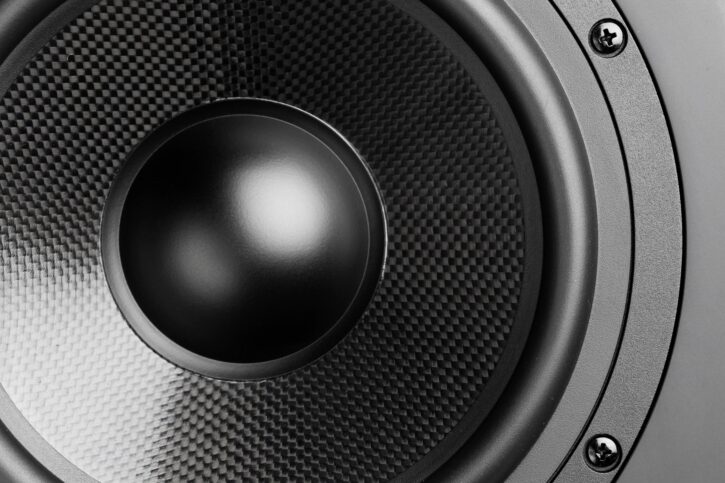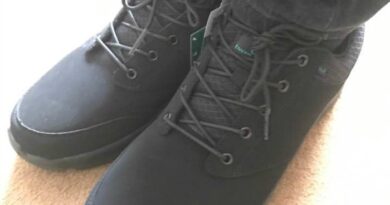Factors to Consider for a Subwoofer Box design
Building your subwoofer box is the best way to get a custom-designed subwoofer. Your box can save you money, and it’s fun. This DIY is not for everyone as it requires time and work. You can go through the step-by-step guide below if you love doing it yourself. Ultimately, you will get a custom subwoofer box of your choice.

Factors to Consider for a Subwoofer Box design
The first and most important thing when designing is considering the external dimensions. You have to look for the frame diameter if you have limited space in the car. We will go through different factors for designing a subwoofer box.
Minimum Depth
The depth of the box is the distance between the front and back. To do this, you should add 2 inches to the depth measurement of the enclosure size. This way, you can measure the minimum depth.
Minimum height and width of the box
Measure the diameter of your frame this way; you will know the height and depth. Moreover, add more width if you want to add extra components to the subwoofer box. This way, you will know the external dimension.
Material for Subwoofers Box
After designing, the most important thing is material. Use good quality material to ensure the subwoofer does not get mechanical damage. This will make the design rigid and not contractable. Some might wonder what the best material for a subwoofer box is.
There are many materials available in the market. However, we will go through those best for the subwoofer box.
MDF (Medium Density Fiberboard)
MDF is a widely used material to design standard subwoofers boxes. This material is highly dense, daubable, and strong, which helps to improve the overall sound quality.
Plywood
Another material used to make a box is plywood. It is an excellent strong material that is lighter than MDF. It does not rattle when the subwoofer speaker vibrates inside it. When you buy plywood, make sure it can no defects. Later these defects can cause a vibration of the box. Sound quality drops if there are too many vibrations.
Fiberglass
This is an excellent choice if you want to build a lightweight design. Using fiberglass, you can make different shapes and sizes. You can make customized subwoofer boxes as well.
Building A Subwoofer Box
When you have made your design and have all material, you can start it and build your subwoofer box. To make a subwoofer box, you might need glue, metal screws, and carpet.
The sheet metal screws are required to put together the subwoofer box. Strong glue helps to join together MDF and fill the gaps. It also acts as a good sealing agent. Glue can hold the MDF together. Still, sheet metal screws are needed to make the bond stronger.
Draw Measurements
The first step is to make measurements on the MDF panel. Take precise measurements according to the size that you want. In total, there should be seven panels. Six panels for walls and one panel to mount all the subwoofer driver.
These pieces can easily be cut using a table saw. The saw can cut precisely, which is essential for the subwoofer box. Make sure to make perfectly square cuts, so they join perfectly. During cutting, dust will be created, so use a mask and glasses.
Joining Front Panels
Connecting the two panels will make the double thickness front wall of your subwoofer box. The wall thickness will increase. Now use strong wood glue to secure the connection. Strong wood glue ensures you get a strong connection over a large area.
Marking the center point
Now let it dry for some time so that the connection becomes strong. Once the whole thing has dried up, locate the central point. Use a compass to mark the circle if you don’t have a template.
Make a small hole at the center of this circle. For your subwoofer panel, make a hole in the back panel. This hole is used to place the subwoofer terminal cup. This design can vary depending upon the terminal model that you use.
Now you have to join all the panels together. It is essential to mount them together. For this, join the back panel first. Then you can move on to join all other small panels. Cover all the panels with a double panel front using strong wood glue. The glue will join the panels together.
Applying glue to all panels
Applying a thin coating of glue to all panels. Now you can make holes with a drill. When drilling is done, all holes need to be sealed properly. For this purpose, use glue so air cannot enter the subwoofer box.
Using screws to fasten the walls
Now you can use screws in the predrilled holes to join the whole box. This will ensure the box becomes more strong and more durable. Screwing the entire box together is very important. Use long screws as MDF is thicker than other materials.
Seal all Gaps
Put some glue to make it more secure. After this, you need to seal the whole thing. For this, use silicone glue to make an airtight seal. This fills every gap and hole left by the glue.
Now leave the box for 48 hours to make it dry completely.
Measure the carpet
To add a graphic and aesthetic look to the box, it should be covered in carpet. Precut the carpet according to the size of your subwoofer box. Take the cutting, use glue to put the carpet on your box, and let it try.
Place the speaker wires and other components inside the box through mounting holes. Now your subwoofer is fully designed, you can place your subwoofer cup in it.
Connect the wire terminal to the subwoofer enclosure
Now your subwoofer box is ready to be used. Connect the cable to the connector inside the enclosure. One should make sure that the terminals are properly sealed. If they are not sealed, they can ruin the whole process. Test your subwoofer inside the box. You can use an external amplifier to increase sound quality. You can place it in your car and run music to enjoy it.







-80x90.gif)

